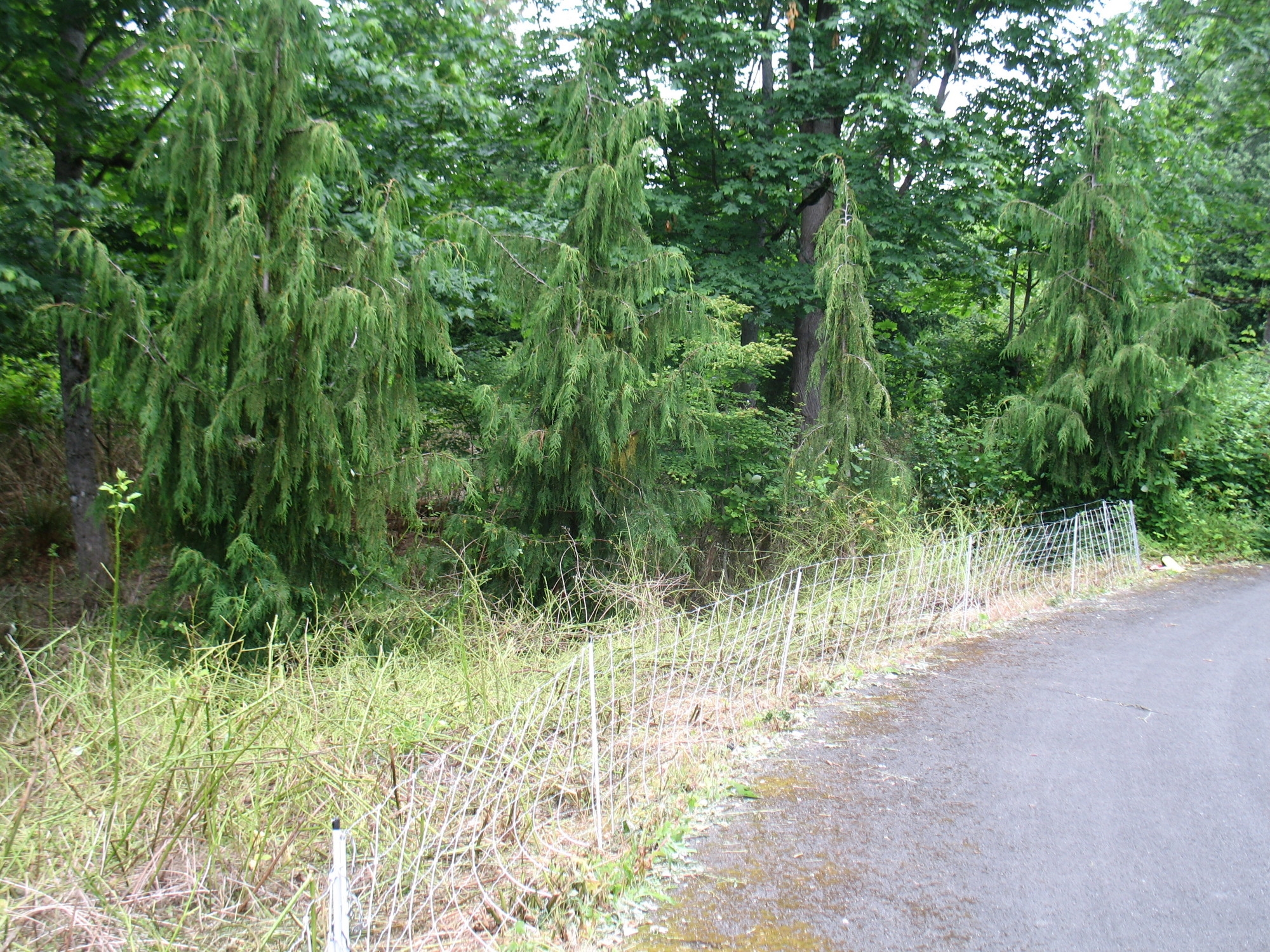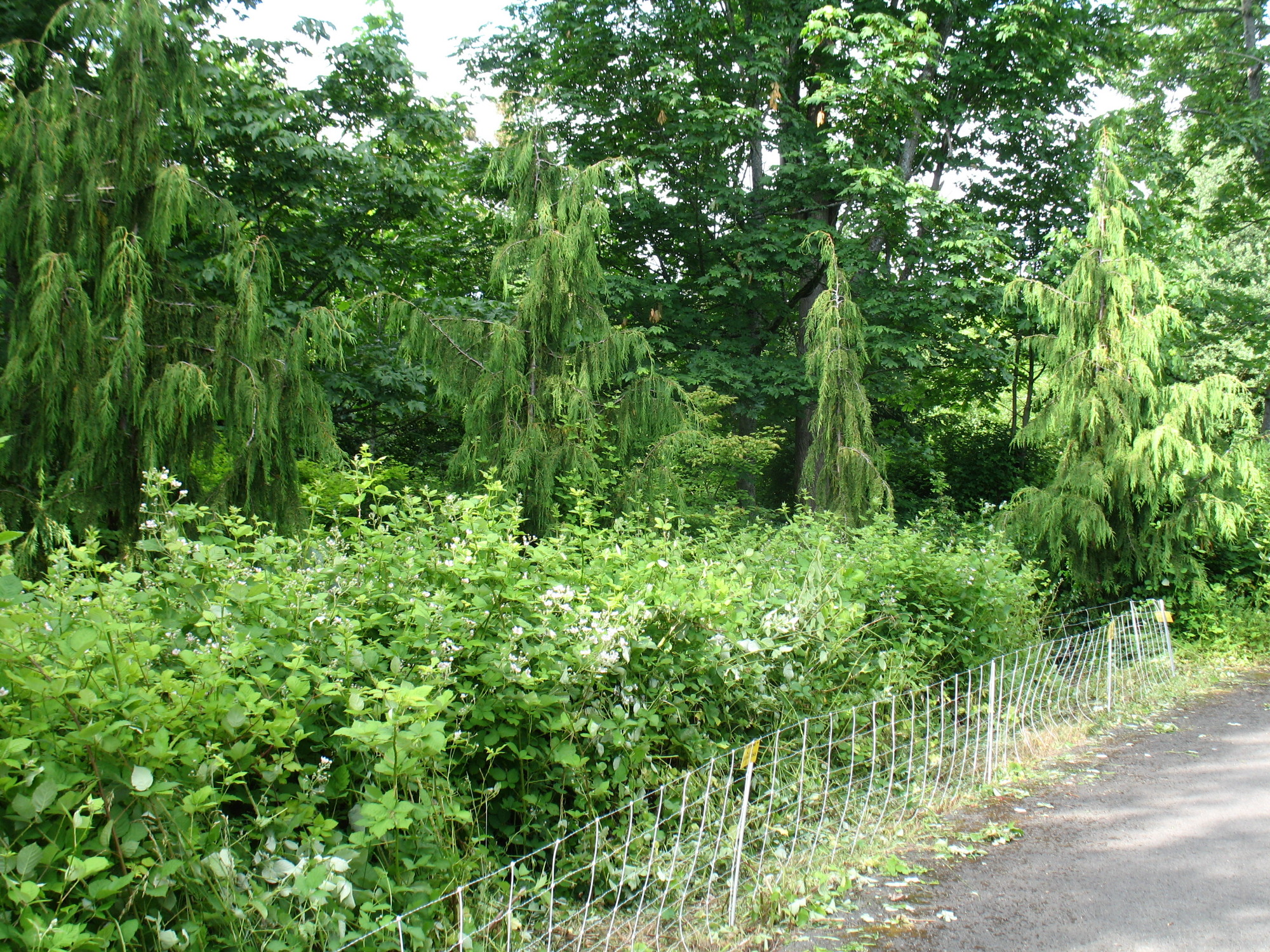Weeds: If You Can’t Beat them - Eat Them!
/By Alan Shank, Former Resource Planner
That is to say, let goats eat them. Goats, those little ruminants with the funny expression on their faces, are browsers. They actually prefer the taste of shrubs, trees and broadleaf plants like weeds instead of your luscious grass. According to Craig Madsen at Healing Hooves LLC, “This is especially true later in the summer as the brush and broadleaf weeds tend to hold their nutritional value longer than grasses. Timing is a critical component of targeted grazing. If you want to favor grasses, wait until they are more mature and the goats will focus on the broadleaf weeds and shrubs, allowing the grasses to go to seed.”
Thorns, you ask? No problem, blackberries are delicious. Weeds hard to reach? Not a problem. Goats are nimble and light on the soil. Goat droppings also quickly decompose into and improve soil. However, too many goats can erode a sensitive bank and should not be allowed in or near fish-bearing streams.
Poisonous Plants
Some weeds and many landscape plants actually are harmful to goats. Madsen says “there are some plants that are poisonous to other livestock, and not to goats, such as yellowstar thistle. Other plants such as tansy ragwort, nightshade and peavine can be browsed by goats in limited quantities and it shouldn’t be a problem. Goats should not be turned into a solid field of tansy ragwort as they can’t balance their own diet and may eat too much, which could cause problems. Some plants should be totally avoided such as poison hemlock and rhododendrons. In my experience goats do not know which plants to avoid.” So, whether your challenge is knapweed, oxeye daisy, common tansy, Canadian or scotch thistle (to name a few), goats are thinking “dinner!” Just give them variety and make sure they’re not starving, and keep an eye on them if possible.
Browsing goats can be ideal weed controllers in situations where they’re rotated through the same pasture as cattle, horses and other grazing animals as well. By putting grazing pressure on the weed population, goats give grasses the advantage, allowing them to thrive. But don’t expect instant results. It may take several years to see substantial improvement in a weed-infested pasture. Plus, on-going weed management is necessary for a number of years due to residual weed seeds. Other considerations for pastures are soil fertility, pH, grass species, stocking rates, and grazing by other livestock.
People own goats for a variety of reasons, including as pets and for meat, milk, milk by-products and breeding. That means raising goats to control your weeds may also produce a marketable product while providing you a valuable service. Goats do need a mud-free clean and dry shelter, hay in winter, regular worming and shots, some company, regular hoof trimming, plenty of clean water, and goat-proof durable fencing.
If you don’t want to raise goats, but still like the idea of using them to control weeds, you can hire a goat herding service two to four times a year. Consider that goats eliminate the use of fuel, heavy equipment, herbicides and pesticides–while also conditioning and fertilizing your soil. So, hiring a herder may be a cost competitive option worth trying.
What Do Grazers Prefer?
Cattle and horses prefer grasses, which promotes the growth of broadleaf plants and shrubs. Sheep prefer broadleaf plants and grasses, which promotes shrub growth. Goats on the other hand, as browsers, prefer broadleaf and woody plants, which allows grass growth by eliminating competition from shrubs and woody plants.
Flash Grazing
Madsen uses 250 goats on an acre to acre and a half, but says it depends on the weeds you’re trying to eradicate and your site.
If a weed seed-bank is present, it may take persistent grazing. His goats tackle mostly blackberries and English ivy but have also been used on Japanese knotweed. With knotweed, it may take a couple of treatments with goats annually and it likely won’t completely eradicate the knotweed.
Grazing by Type of Goat
Pygmy goats are not a good choice for clearing land and are better suited as pets and 4-H projects. Fiber, fainting, dairy and meat goats are good for browsing but need supplemental feed during winter. All goats need good fencing. Five-foot chain link or New Zealand-type is excellent. Field fencing tends to bend when they climb on it, which they will. If you’re thinking of raising goats, check out this online guide: How to Raise Goats by Carol Amundson (you can google the online version at ‘google books’). For more information on raising livestock, including goats, contact Joan de Vries at the WSU Extension Skagit County at 360-428-4270 ext. 240.
Sources for this article
Photos/content-Craig Madsen, Healing Hooves LLC http://healinghooves.com/
WSU Extension Livestock Advisor Nikki Fee
Why Use Goats?
Goats Can Handle Tough Sites
- Agile goats can easily handle:
- Steep slopes
- Rocky or uneven terrain
- Soft soils + light animal = low impact
- ·Goats are not deterred by dense thickets of thorns
- (blackberries, Russian olive)
- Goats like eating plants that irritate humans:
- poison ivy, poison oak, English ivy
- Goats love to eat brush and weeds more than grass
An Alternative Tool
Goats can...
- Be less costly than other options in the right situations
- Reduce or eliminate the use of herbicides
- Prevent seed production - plants may go to seed below the cutting level of a mower, but can’t evade an agile goat
- Be selective depending on timing of grazing and how well the goats like their choices
- Reduce risk to hand crews and machinery by opening up a site, making it easier to avoid dangers
Goats are Fun
- Relaxing to watch - proven employee morale booster
- Entertaining - young goats love to play king of the mountain
- Good publicity and public relations
- Green choice - less fuel use, noise and soil disturbance
- Peaceful to listen to - satisfied eating noises and mothers communicating with their kids



